Piedra del Indio
Location
Foothills of the Tenorio Volcano
Area size
The actual extent of the site is unknown because several engravings were removed and only this one is in situ.
Dating
The iconography of this site is difficult to correlate temporally with ceramic and lithic artifacts, but with the help of the study of nearby sites, it could be said that it corresponds to the Bagaces period (300–800 A.D.) or Sapoá / Ometepe (800–1550 A.D.).
Access
Private
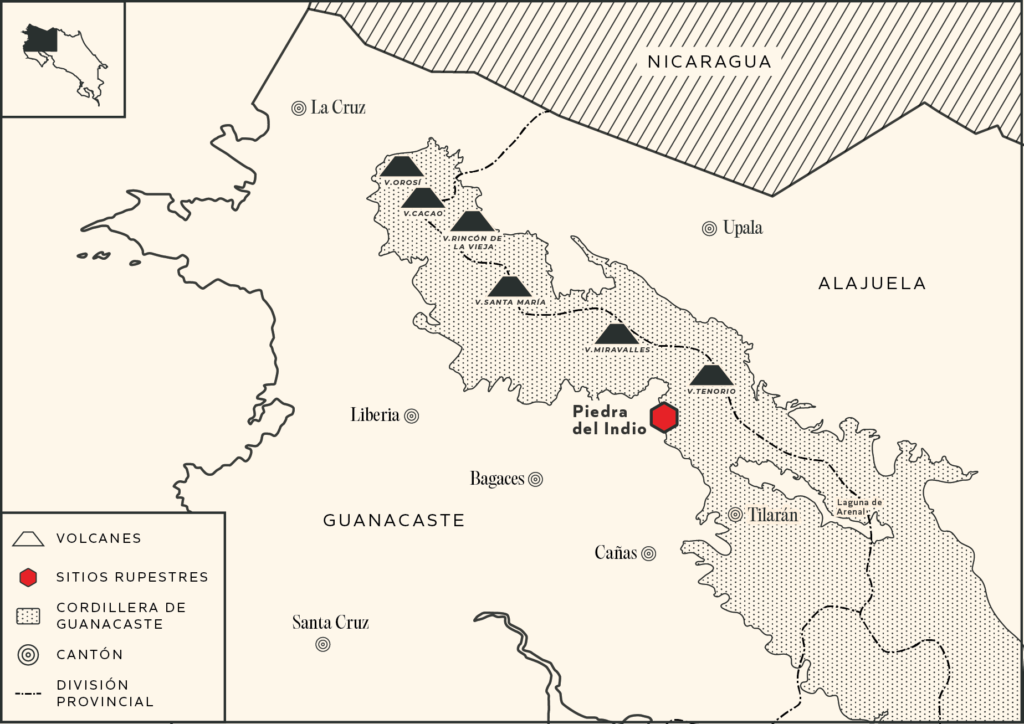
Description
This site has an open-air rock in a slightly broken terrain dedicated to cattle raising. There have been few archaeological explorations in this area, the main one being that of Finch (1983), who carried out a study with a brief description of the motifs, without illustrations, and recorded at least ten rocks located in the Tenorio farm.
The rock is a quadrangular monolith, easy to observe from a medium distance due to its large size. In addition, it has three panels facing the sky: west and southwest. Deep engravings cover its surface, from its flat summit to the top of its west face.
Its motifs incorporate two groups of simple faces. The larger one stands out for its large size and detail, including a complex one with the representation of a feathered headdress. Certain volumes of the rock were used to give relief to the faces, while other flat parts were used to incorporate complex non-figurative representations. The upper section contains faces mixed with wavy lines.
The motif of faces is common in the mountain range; many of them have simple shapes, with a circle and two incisions that suggest the eyes; others are more complex, as they incorporate concentric circles as contours or implement clothing.
The quantity and complexity of the rock paintings present in this site make it one of the most outstanding in the foothills of the Tenorio volcano. It is possible that, in the past, this rock was accompanied by other similar ones, which are no longer in their original location, due to the restructuring of the farms and the clearing of the land.
Gallery
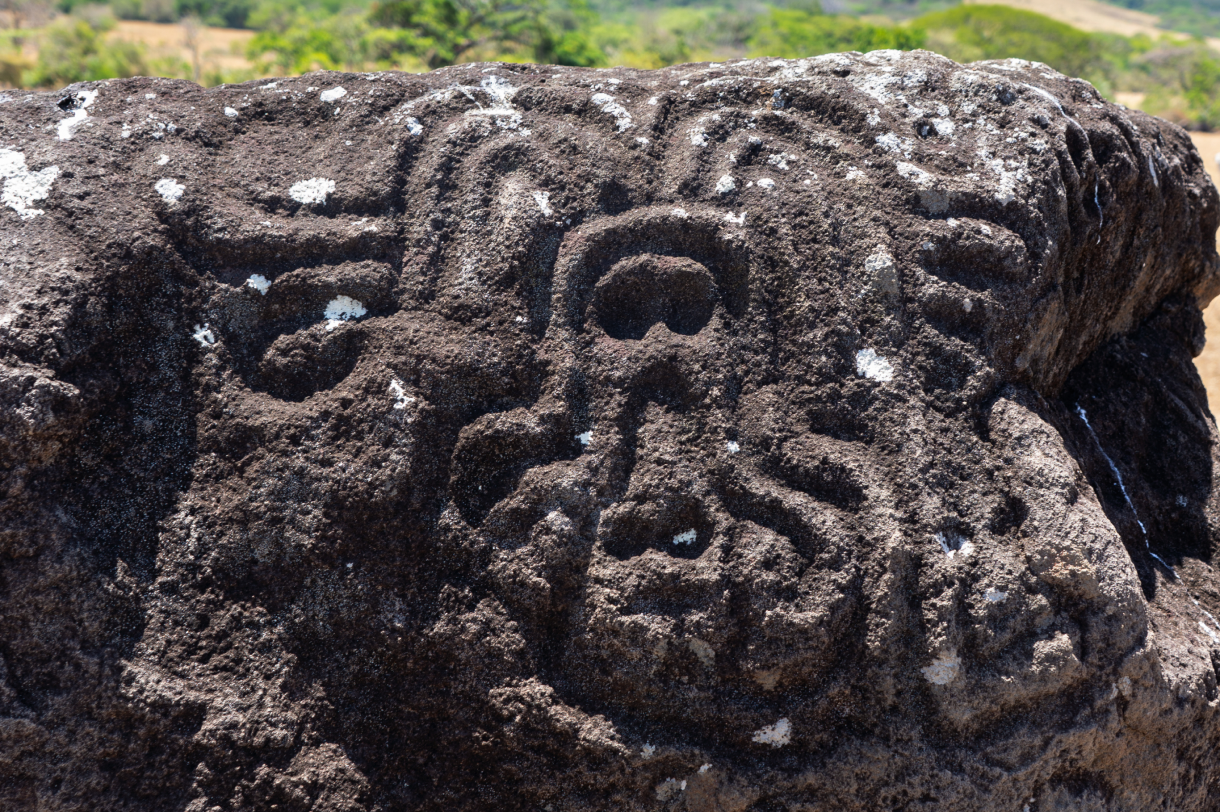
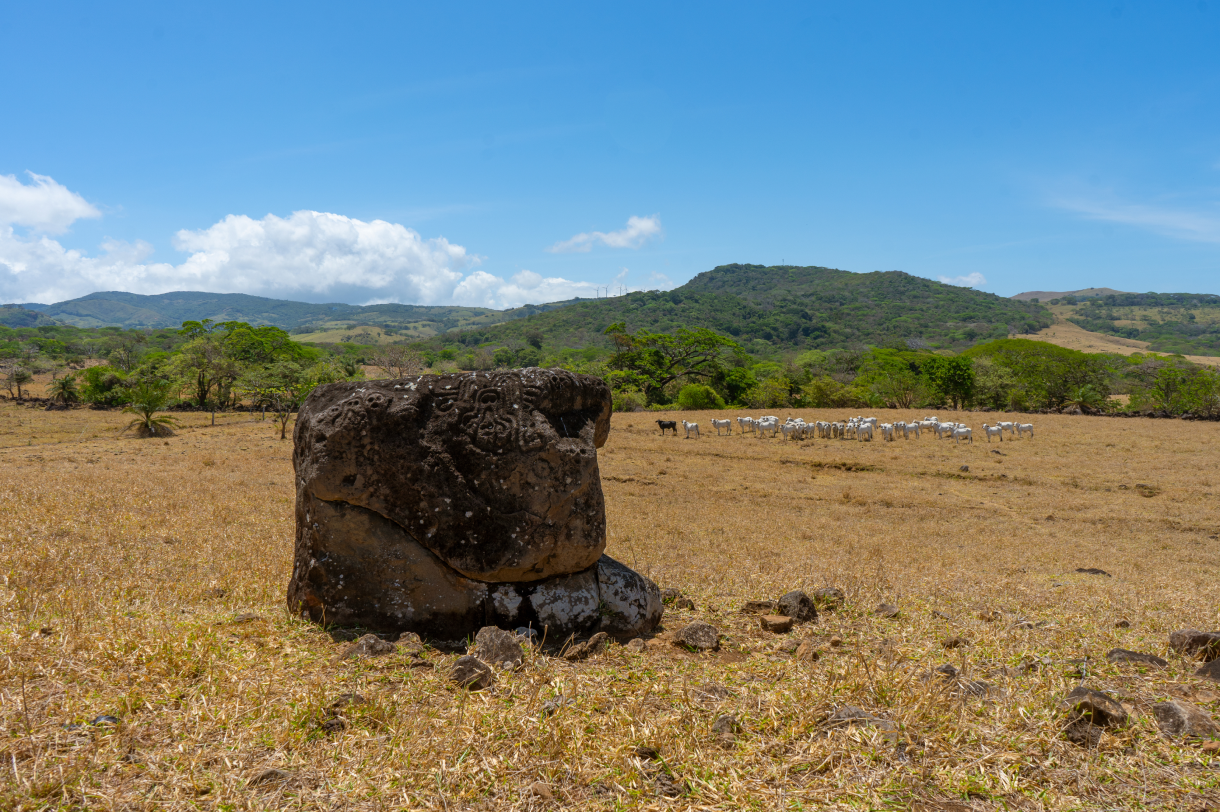
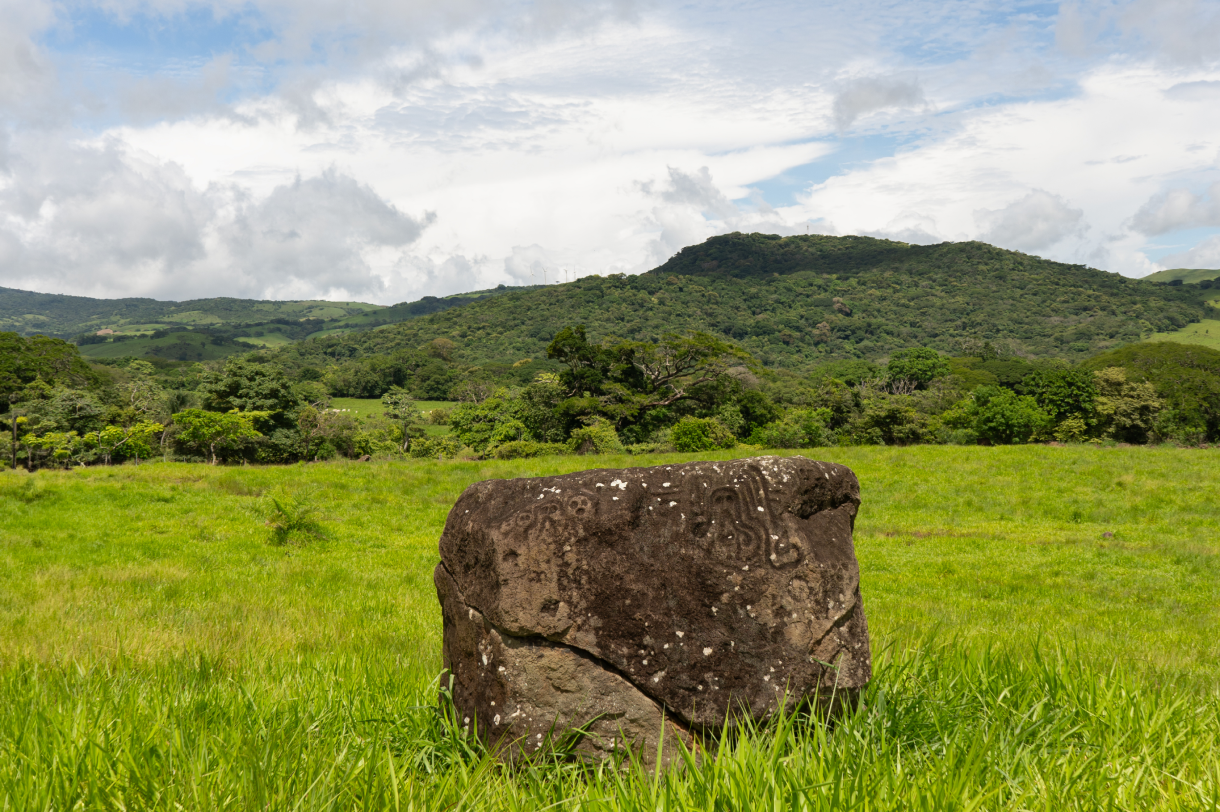
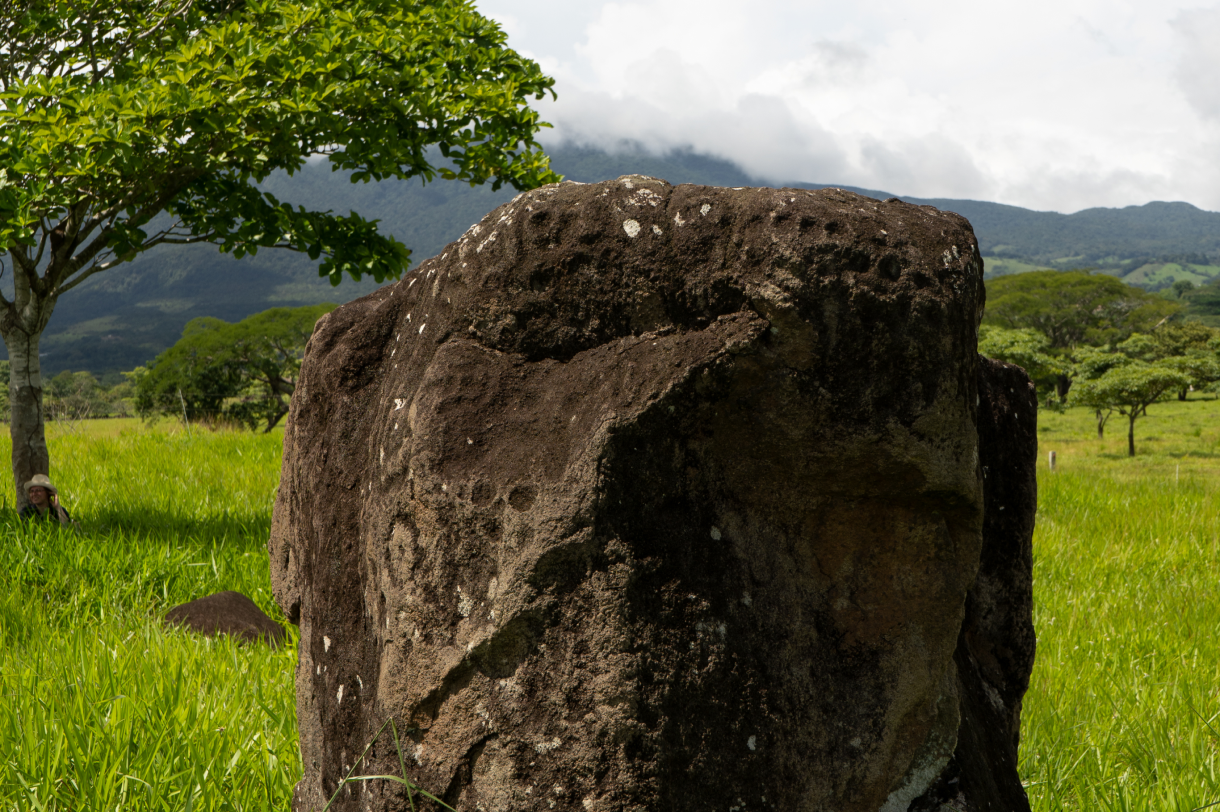
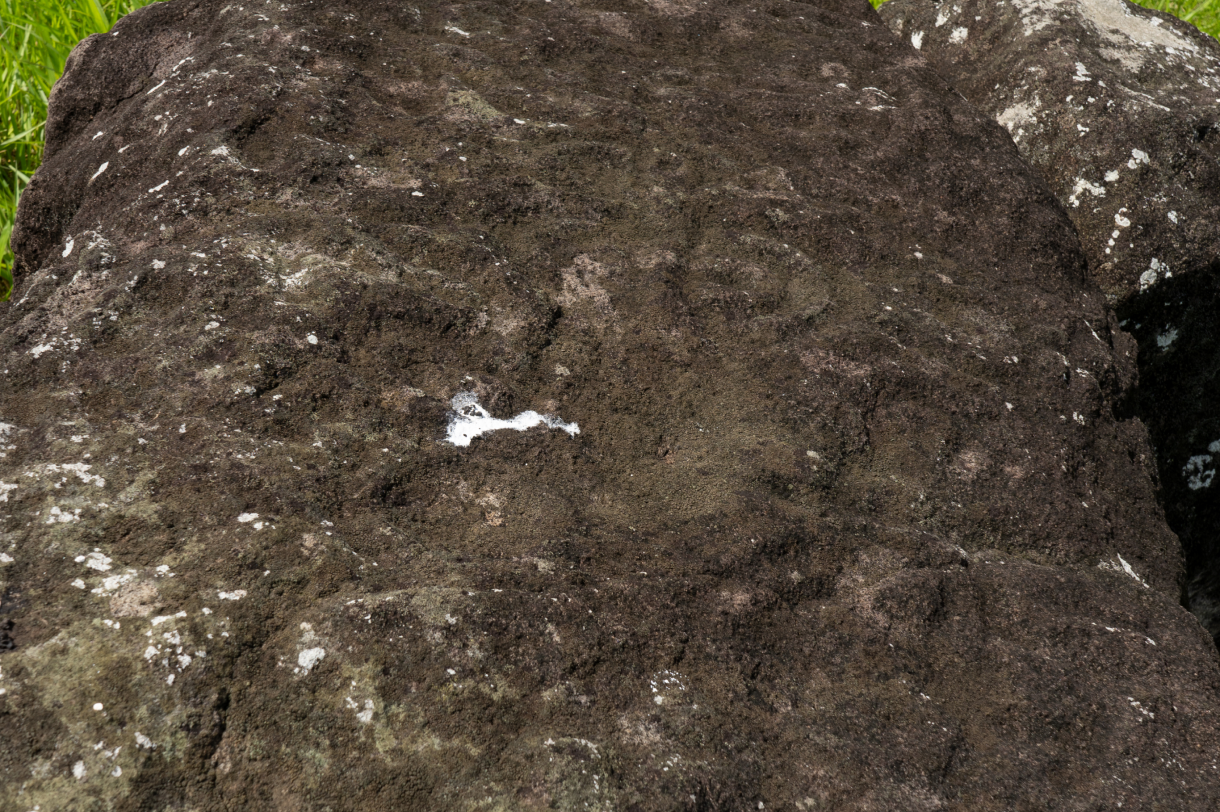
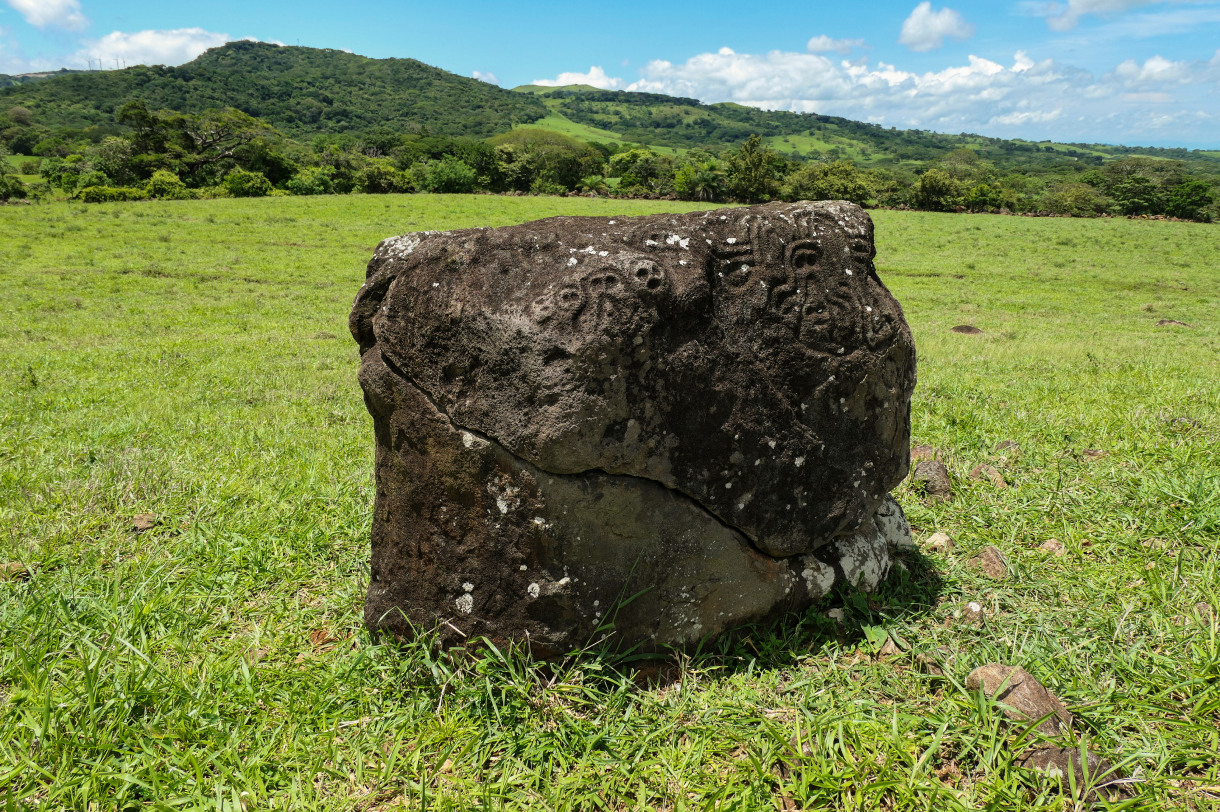
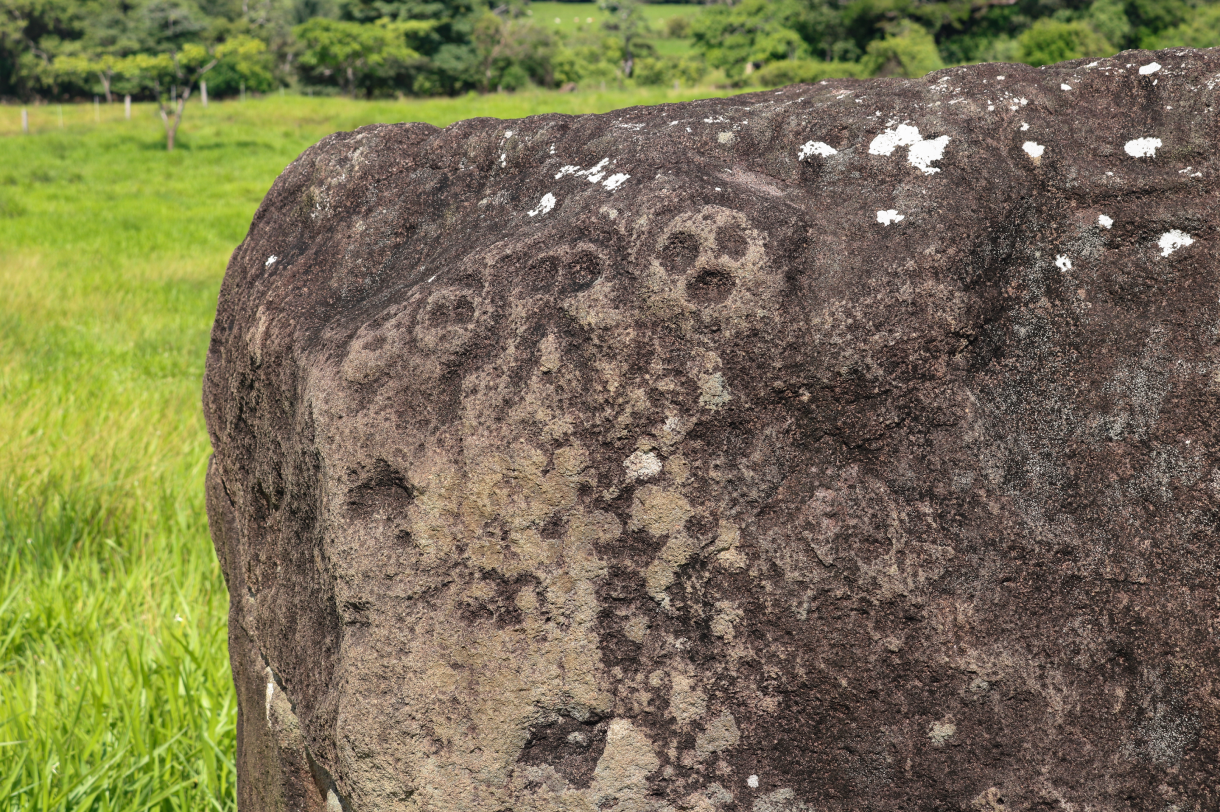
Rock representations
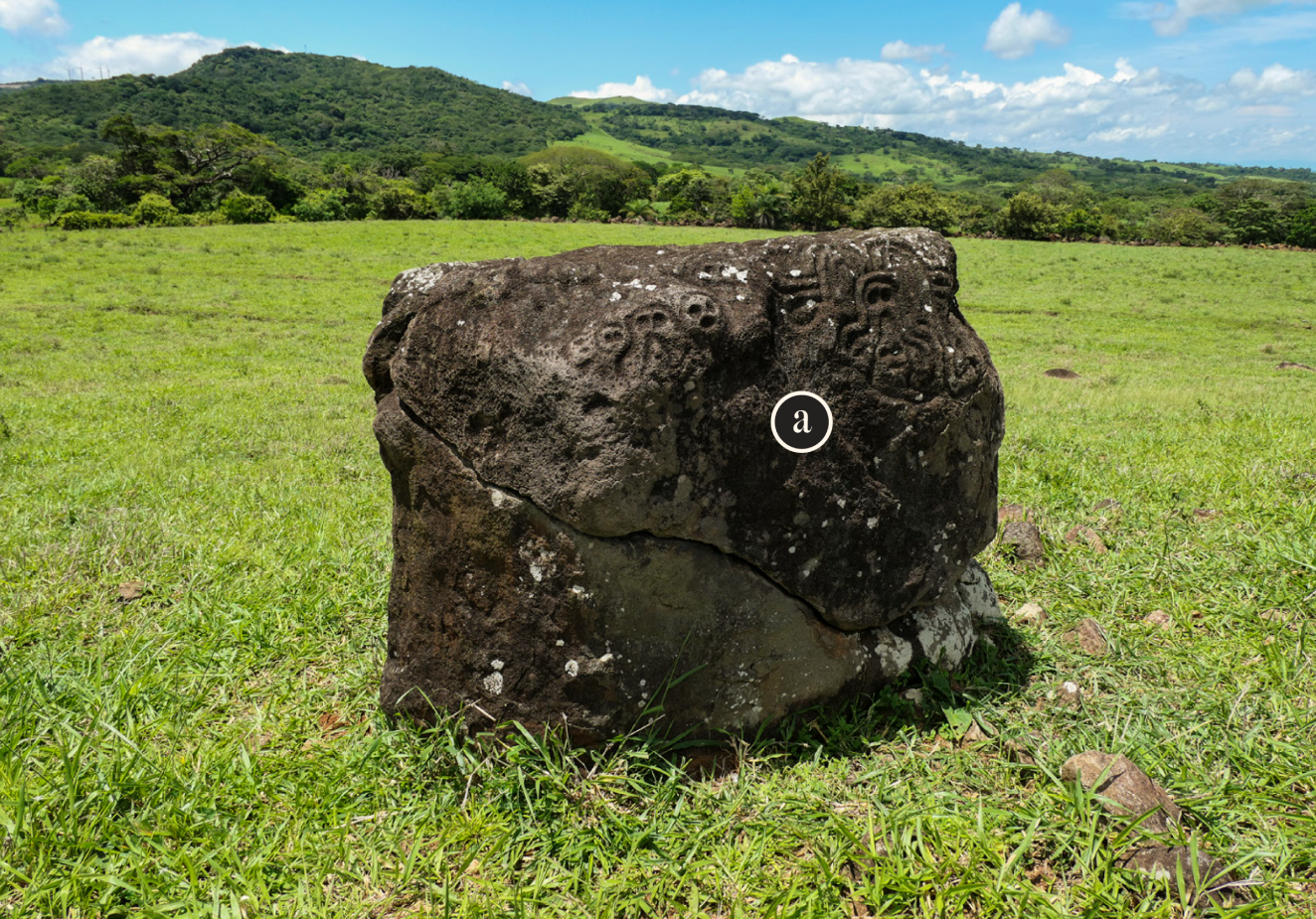
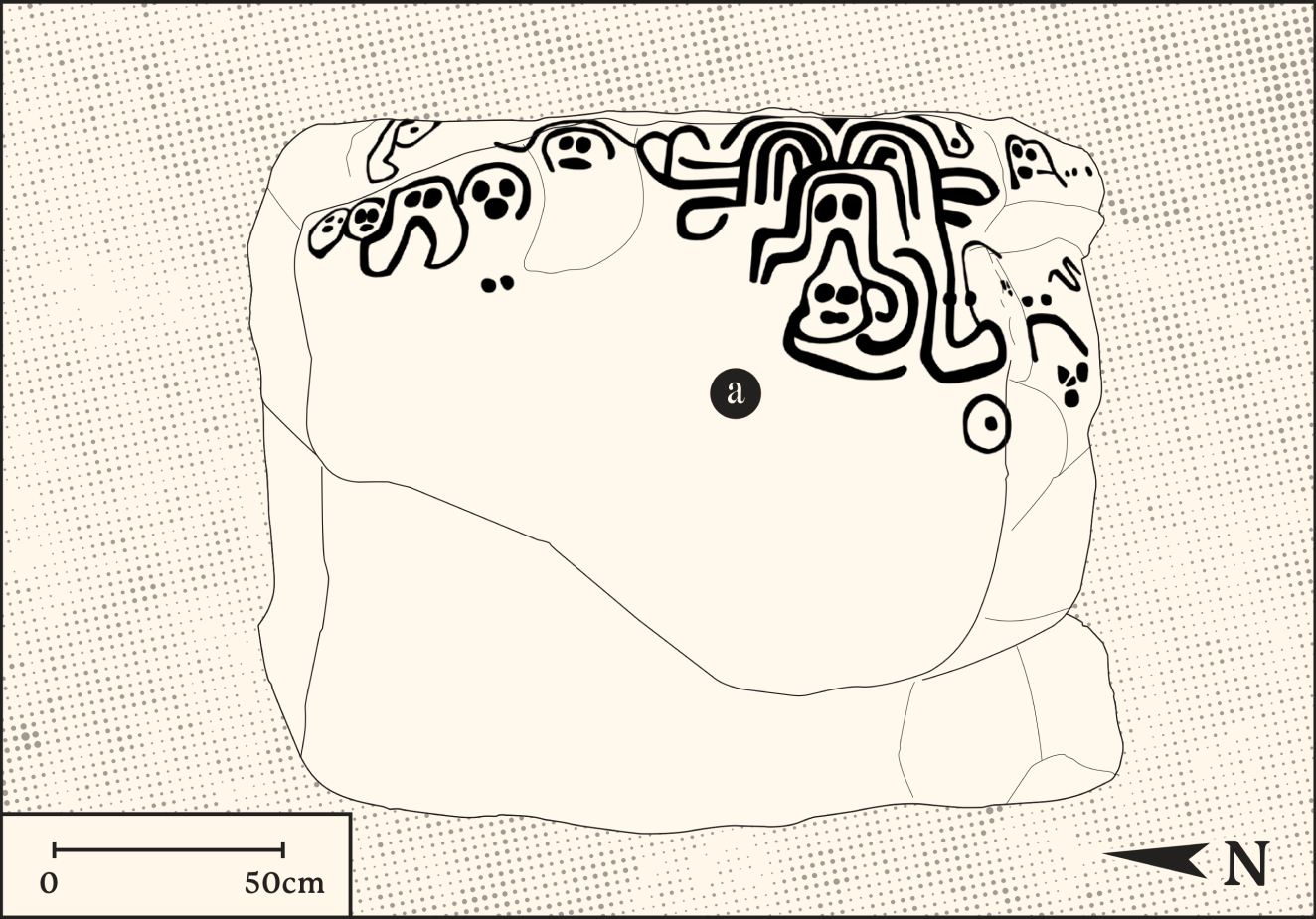
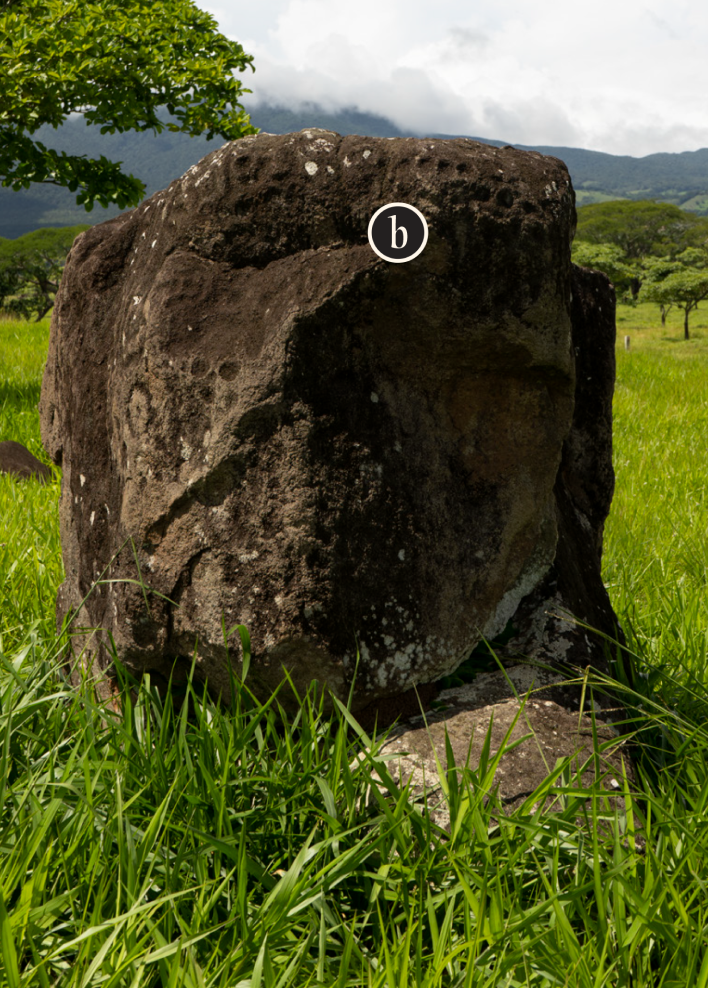
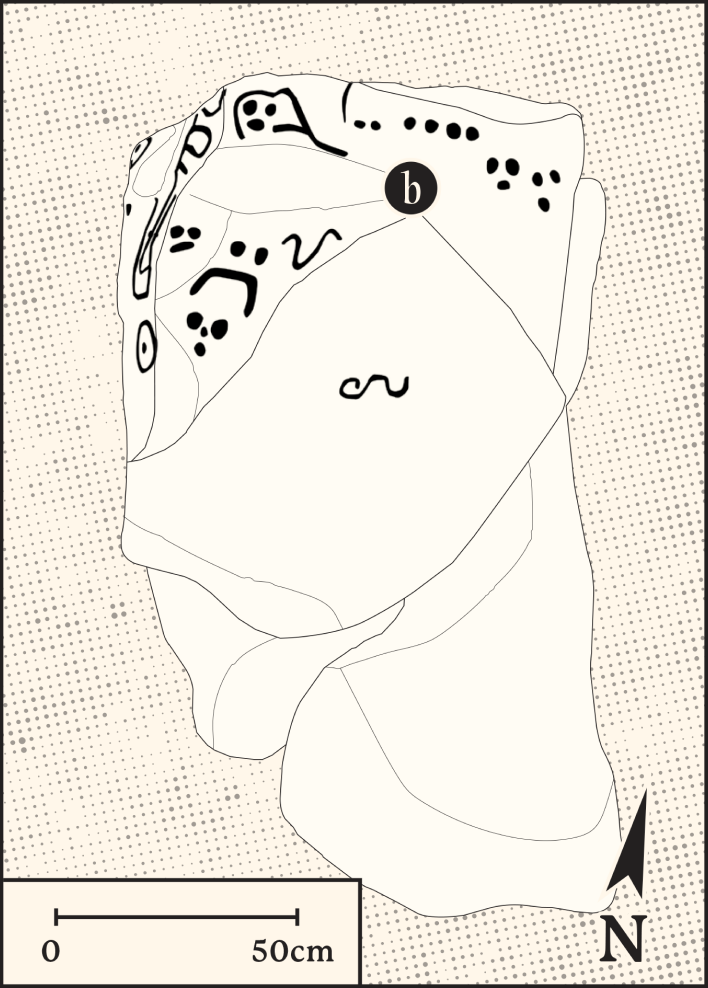
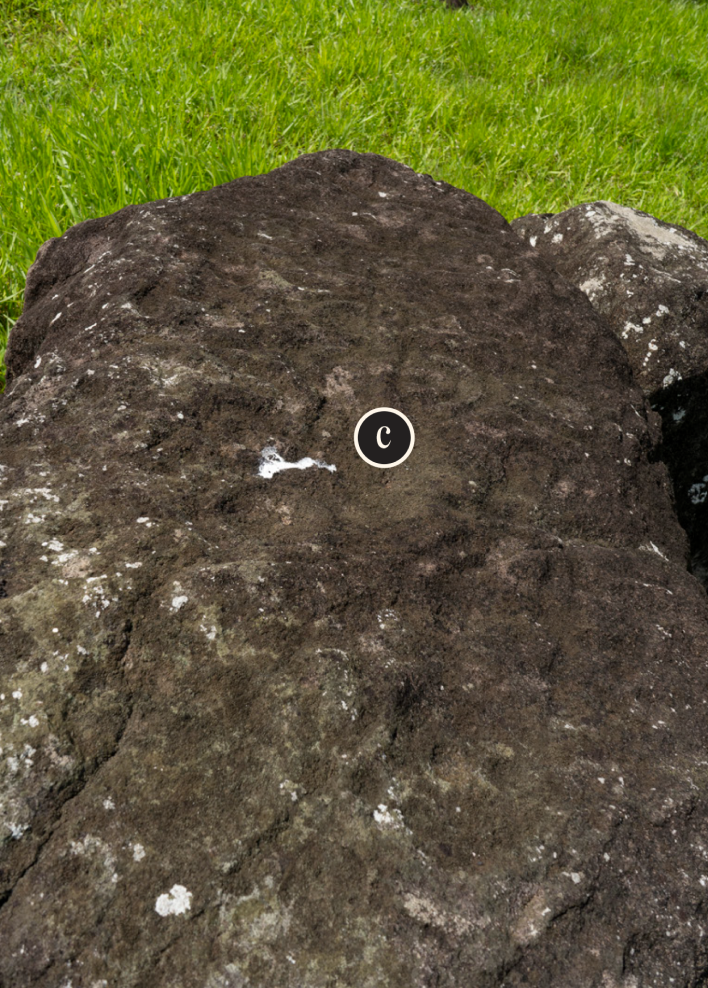
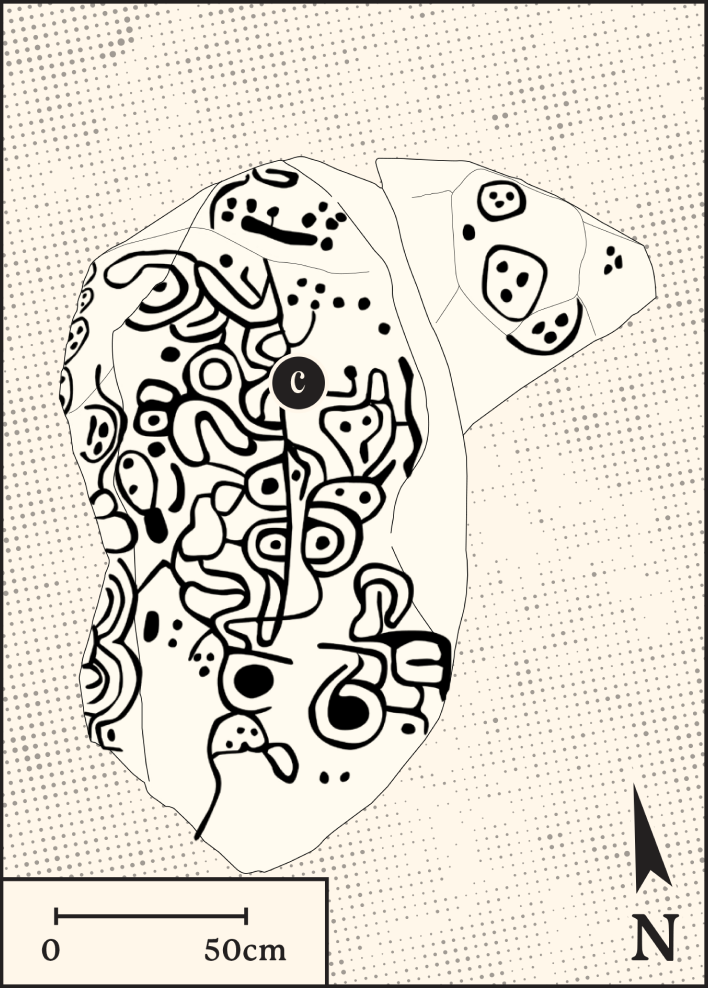
Processing techniques
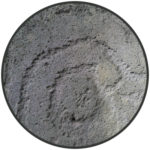
Picoteado
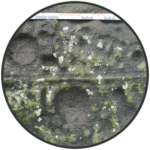
Pulido
This rock features deep grooves and the application of the hammering technique, followed by smoothing.






